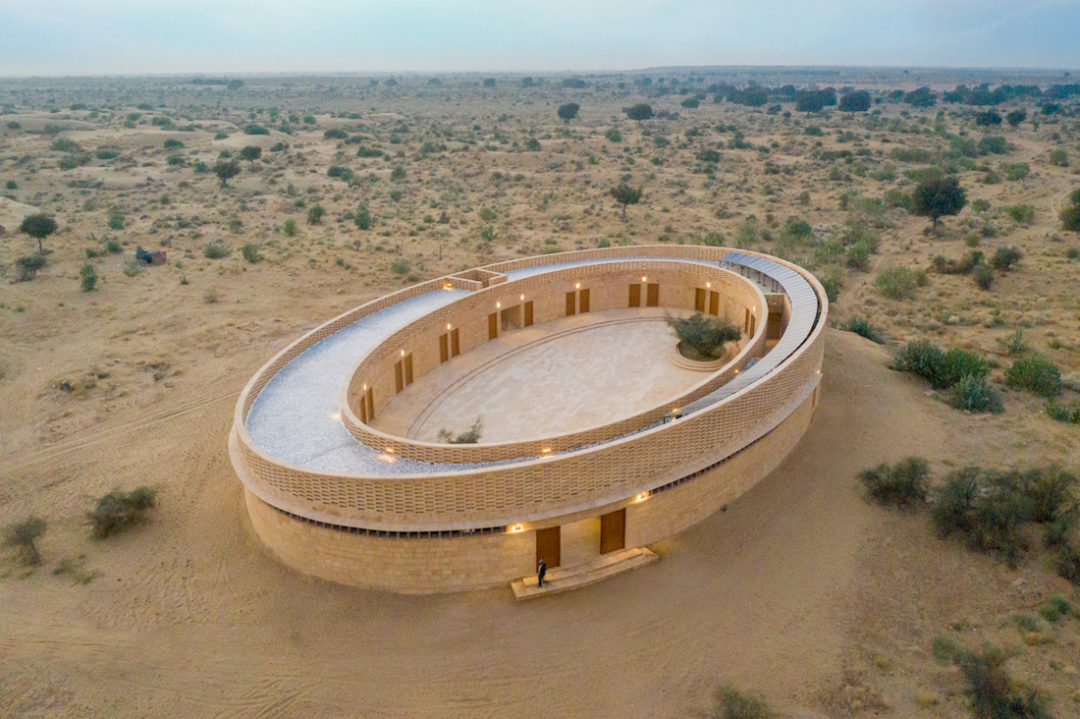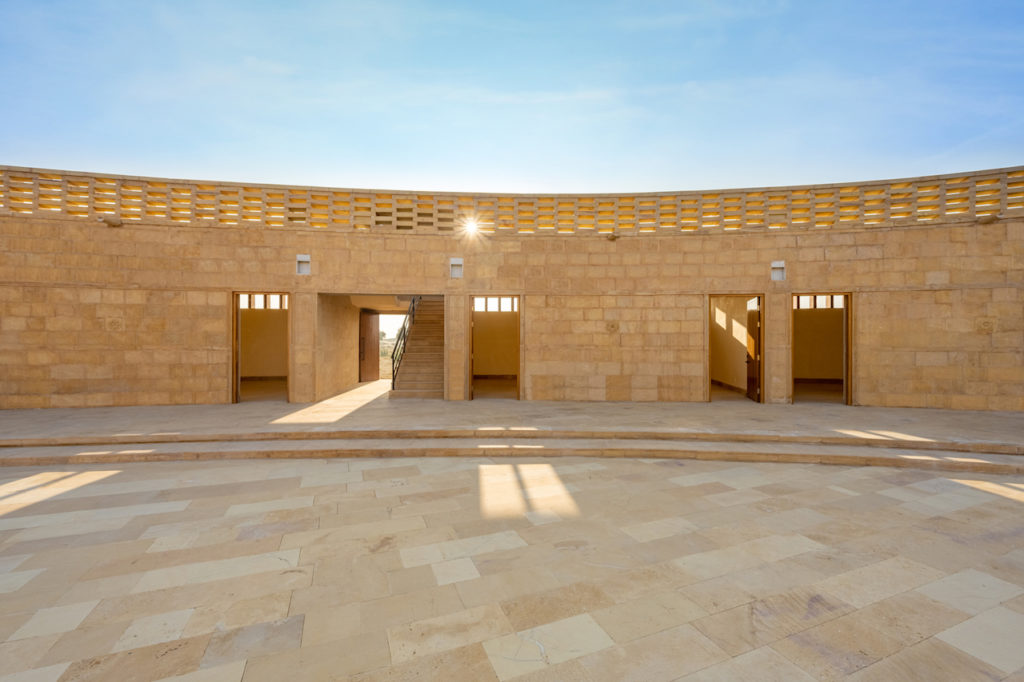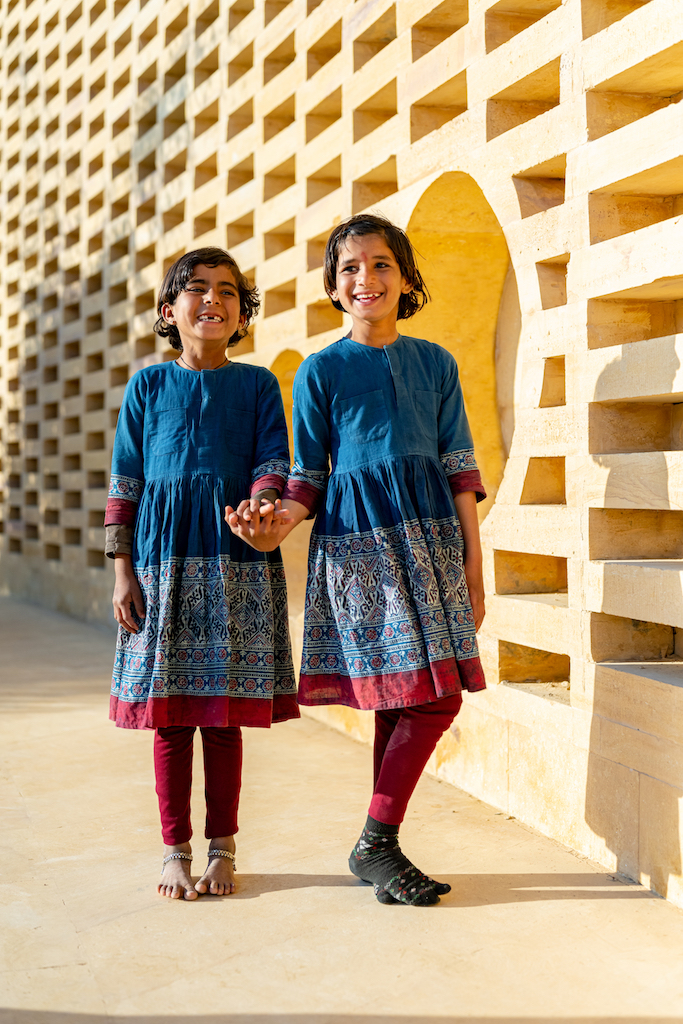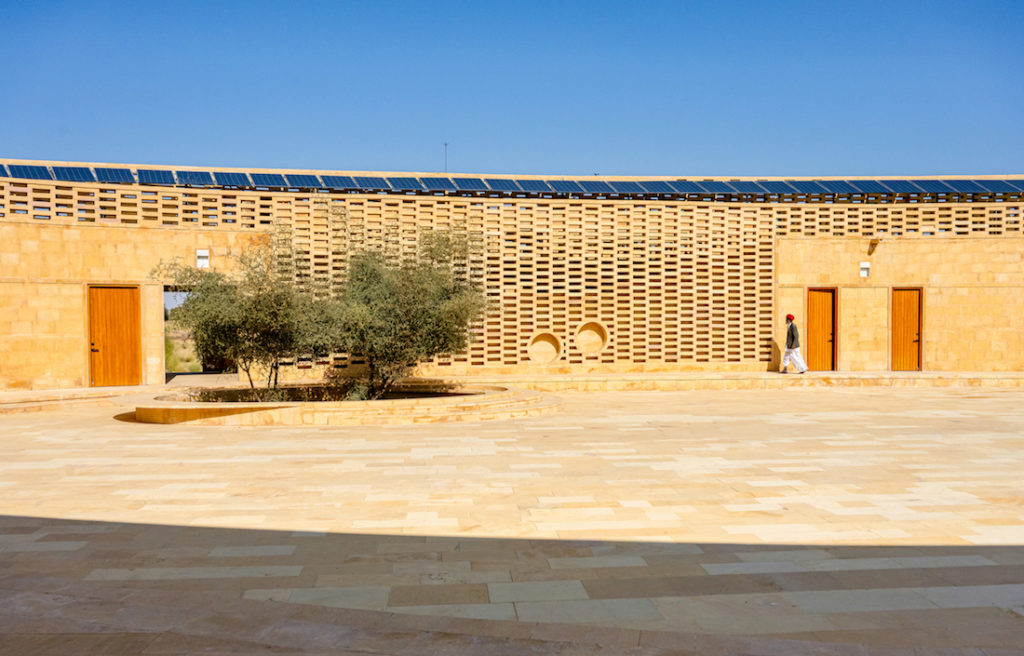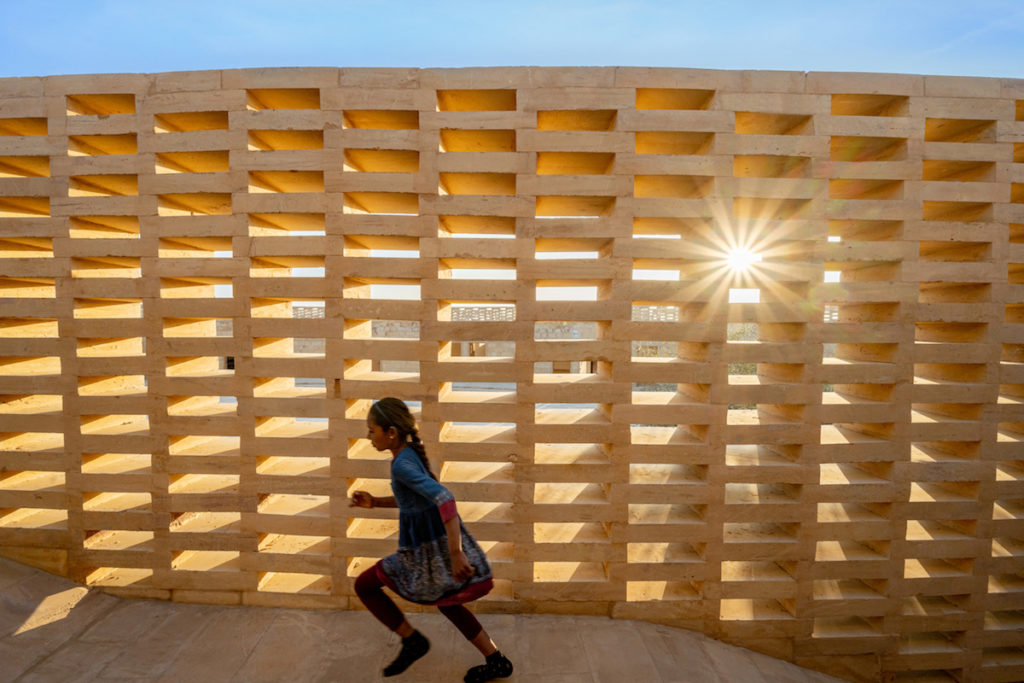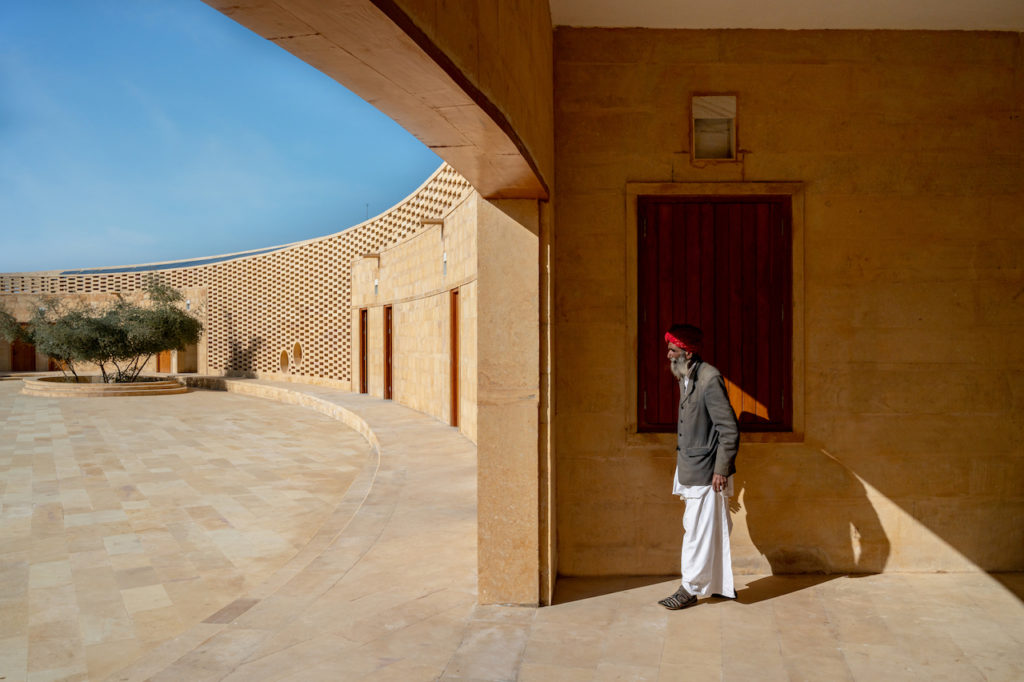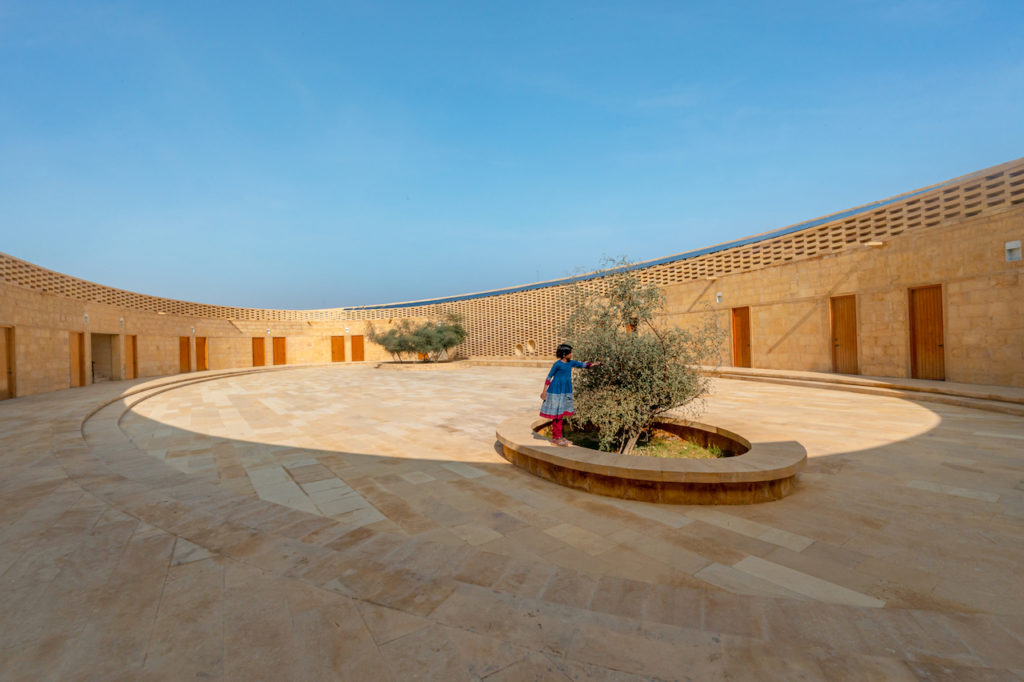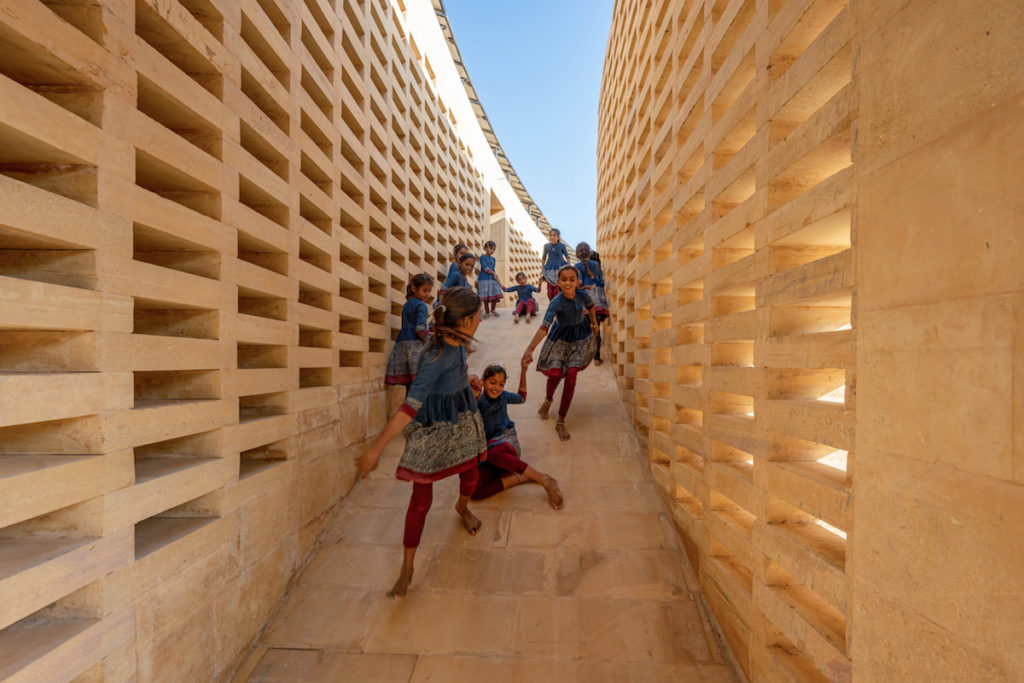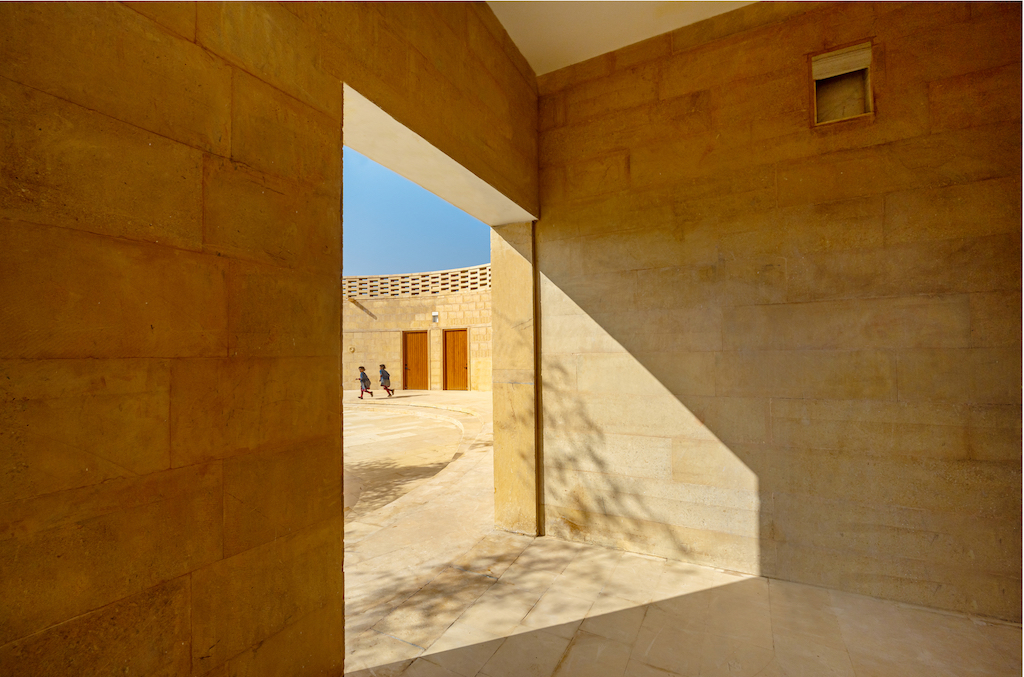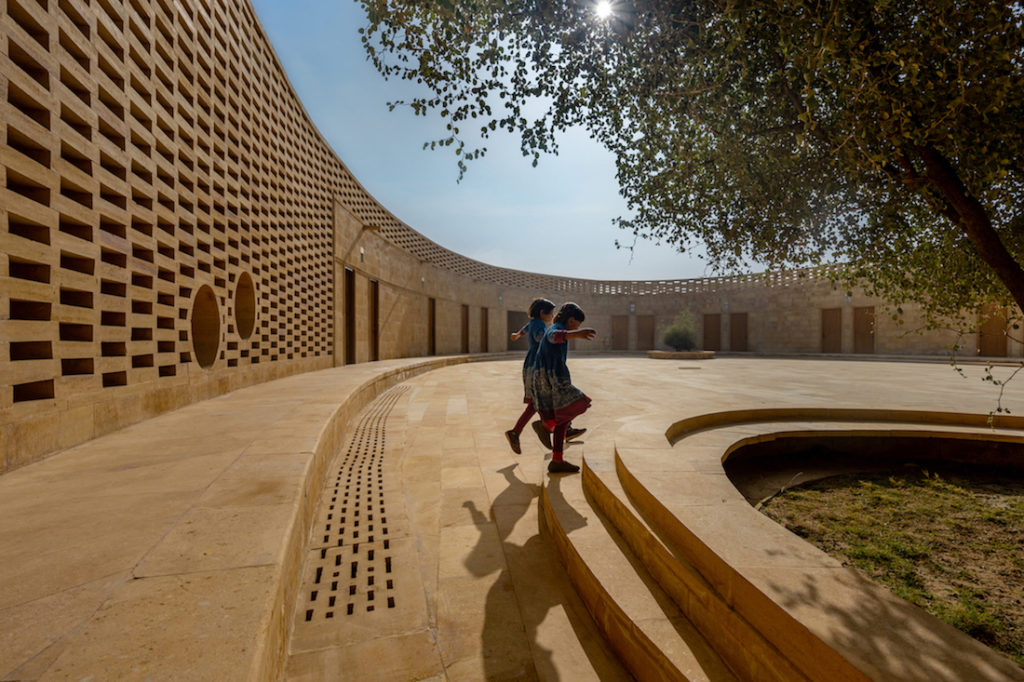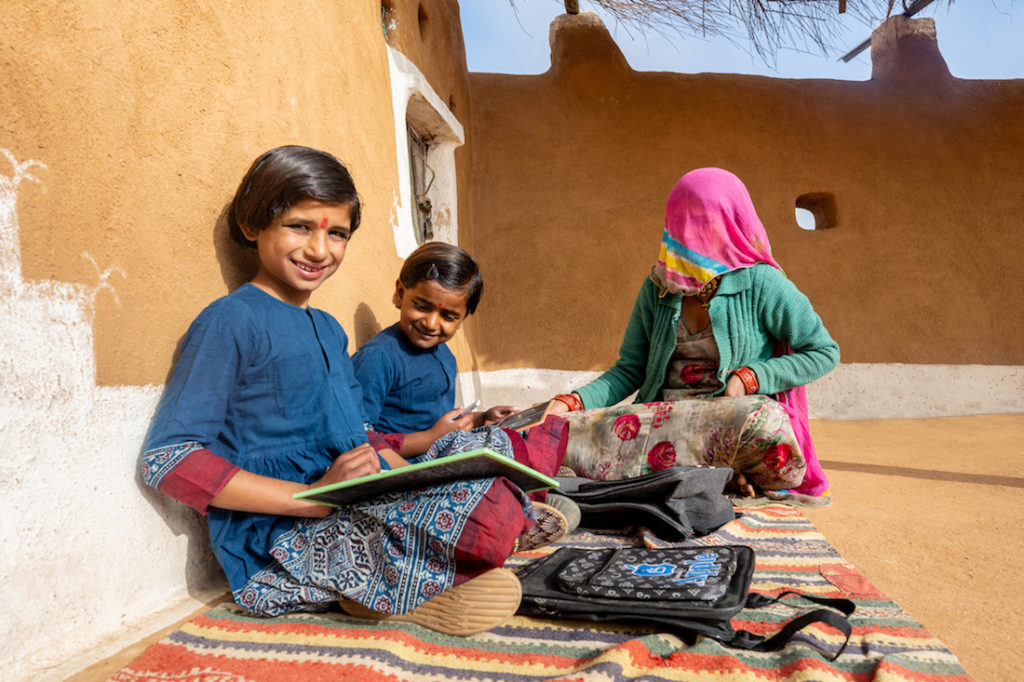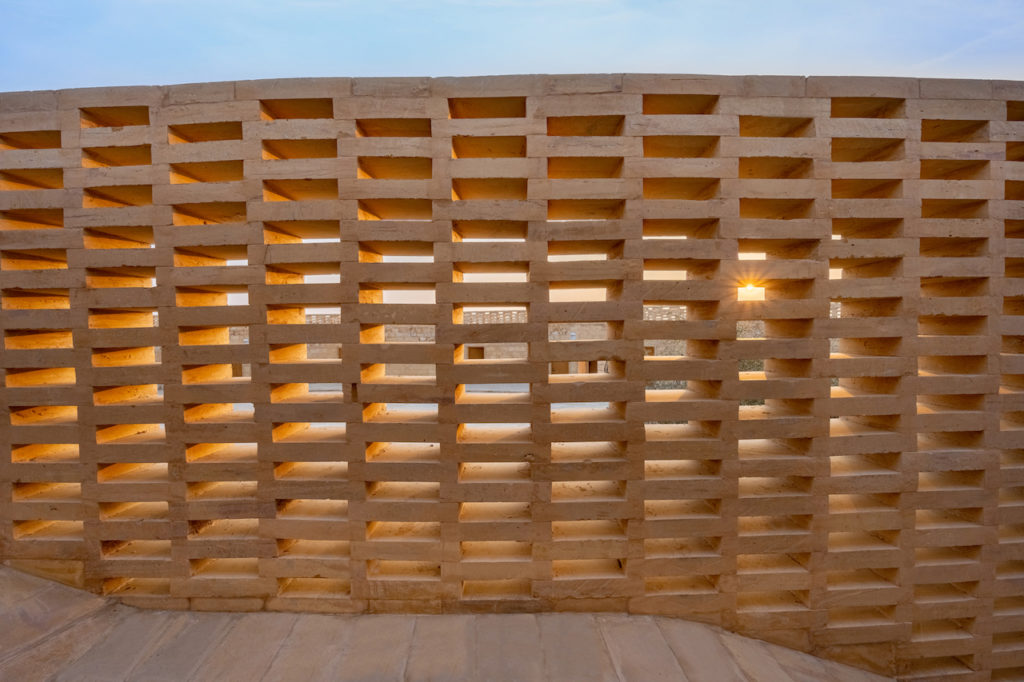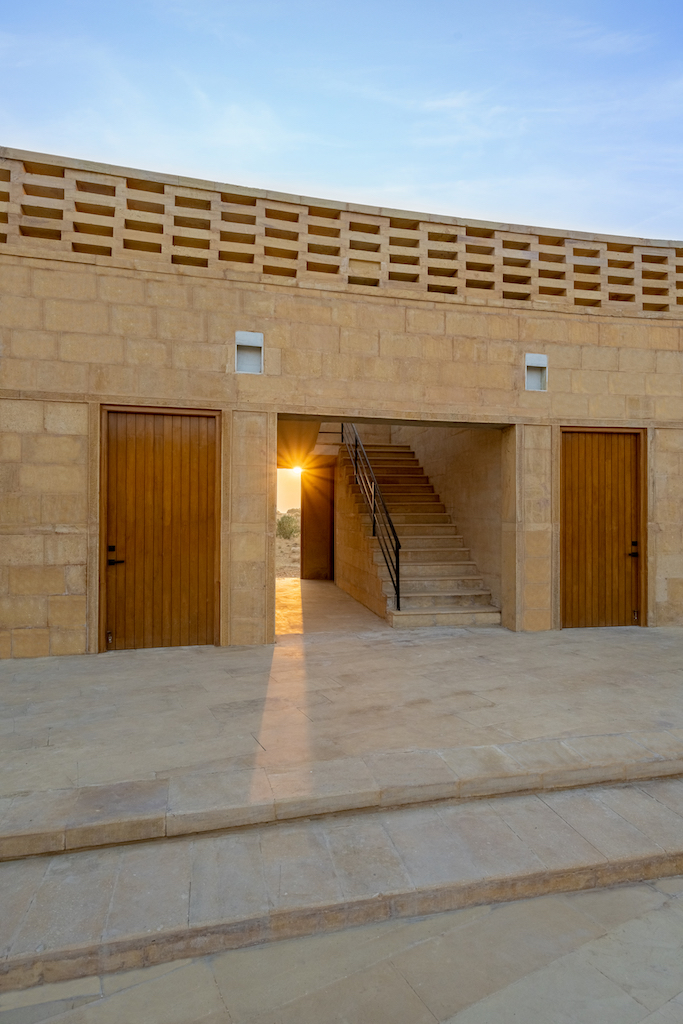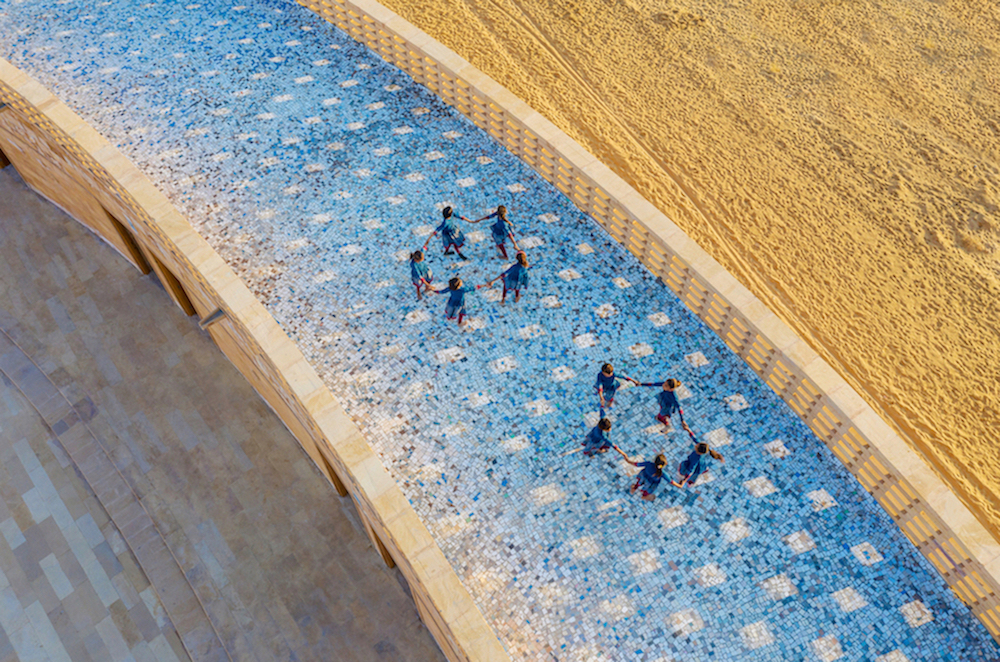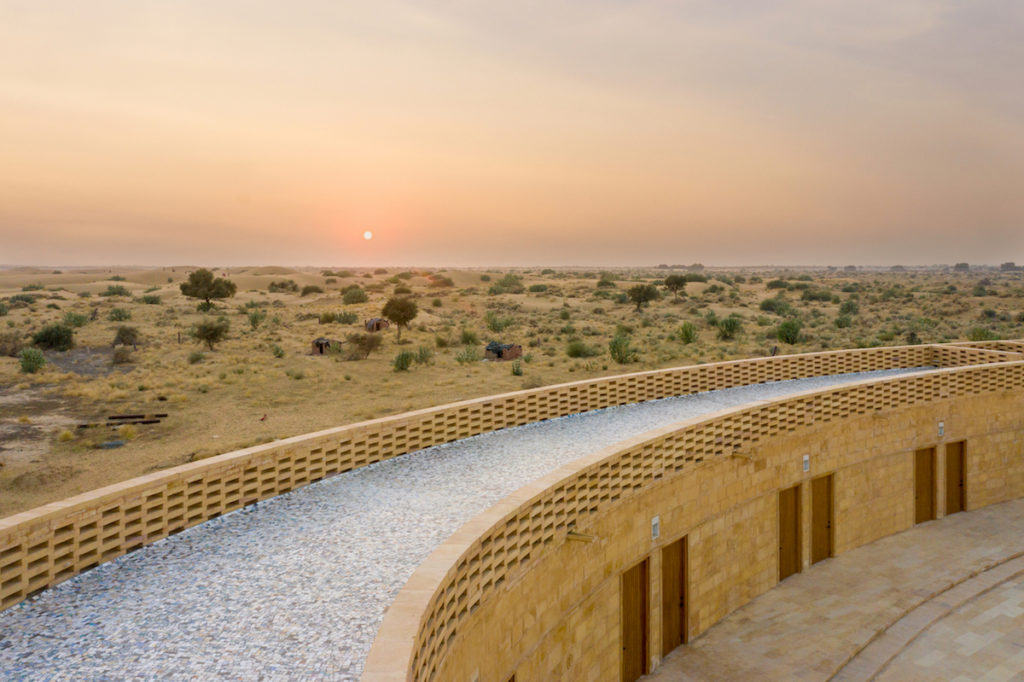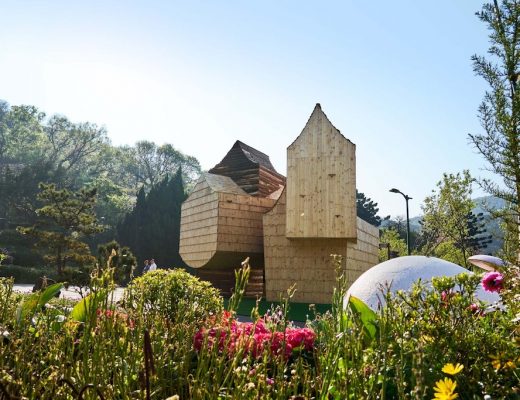The Rajkumari Ratnavati Girl’s School has been designed by Diana Kellogg of Diana Kellogg Architects and commissioned by CITTA, a New York-based non-profit organisation that supports development in some of the most economically challenged, geographically remote or marginalised communities in the world.
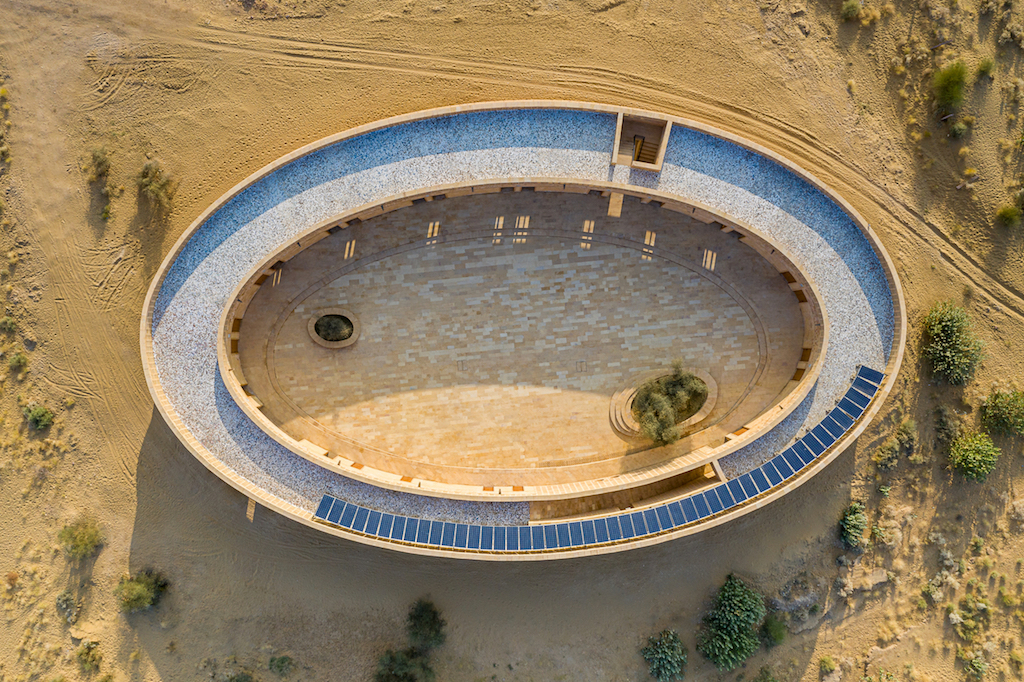

The school will serve more than 400 girls, from kindergarten to grade 10, from below the poverty line residing in the remote and rugged Thar Desert region of Jaisalmer in Rajasthan, India – a state where female literacy barely stands at 32%. The school will be the first in a complex of three buildings known as the GYAAN Center, which will also consist of The Medha – a performance and art exhibition space with a library and museum, and The Women’s Cooperative where local artisans will teach mothers and other women weaving and embroidery techniques from the region.

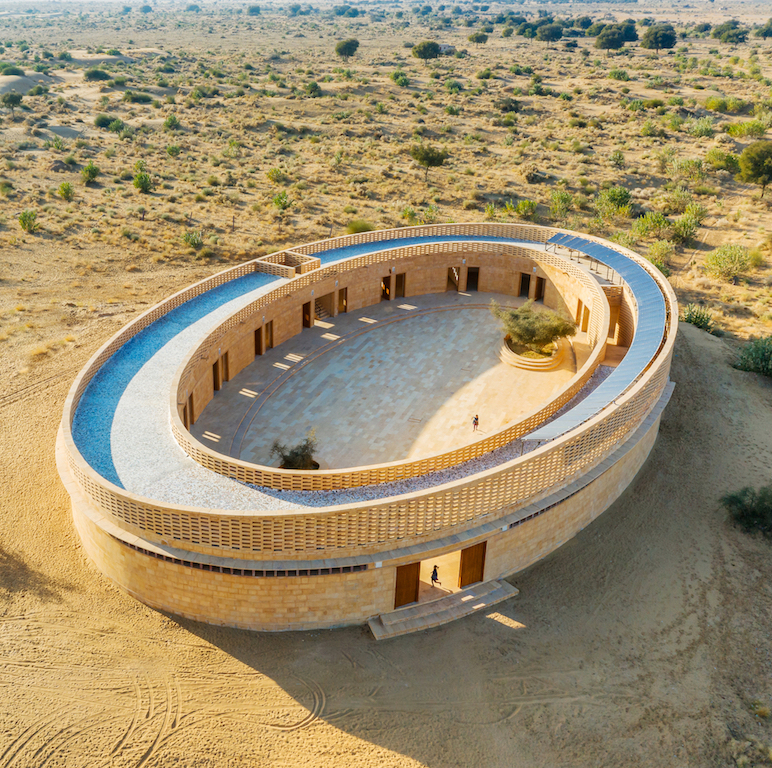
“It is irreverent to the great desert architectural traditions, narcissistic and exhibitionist. Such a big courtyard will be covered over by sand.”
Vikram Berry, Indian Academician
The GYAAN Center will empower and educate women, helping them establish economic independence for themselves, their families, and their communities. Ms Kellogg looked at feminine symbols across cultures when starting the design process – specifically symbols of strength, landing on a structure of three ovals to represent the power of femininity and infinity, as well as replicate the planes of the sand-dunes in the region of Jaisalmer.
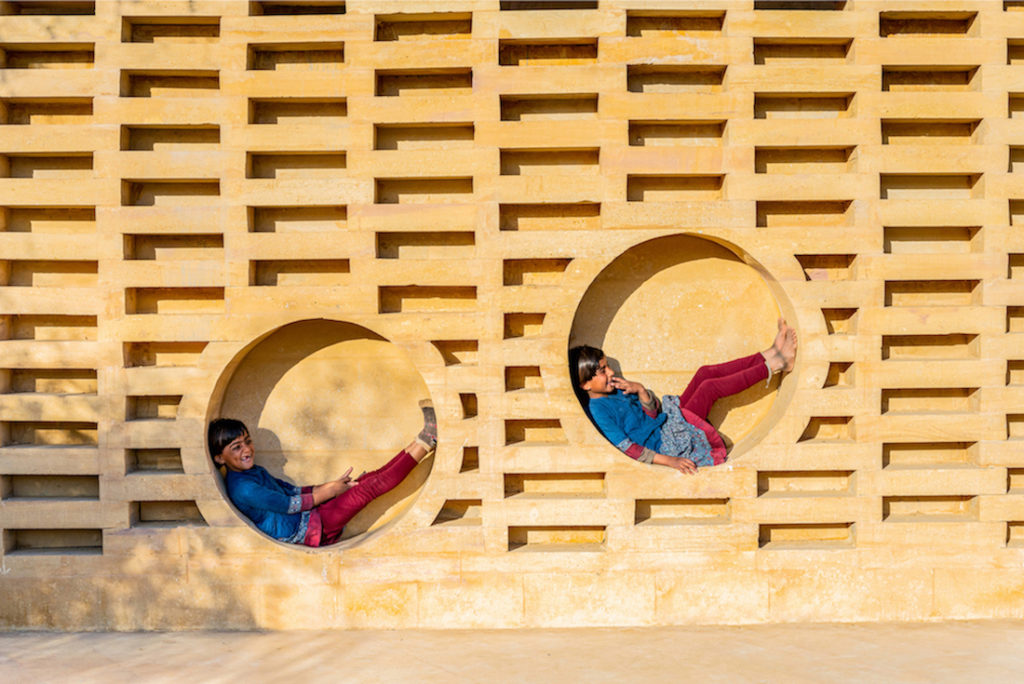

The Rajkumari Ratnavati Girl’s School is made entirely out of local hand-carved Jaisalmer sandstone by local craftsmen. It was vital to Ms Kellogg to include the community in a building made for the community. Using local materials to create infrastructure helped reduce carbon emissions. The school also features a solar panel canopy on the roof as a cooling system where temperatures peak close to 120 degrees Celsius. Both the canopy and jalis keep the heat out and the elliptical shape of the structure also helps bring aspects of sustainability creating a cooling panel of airflow.
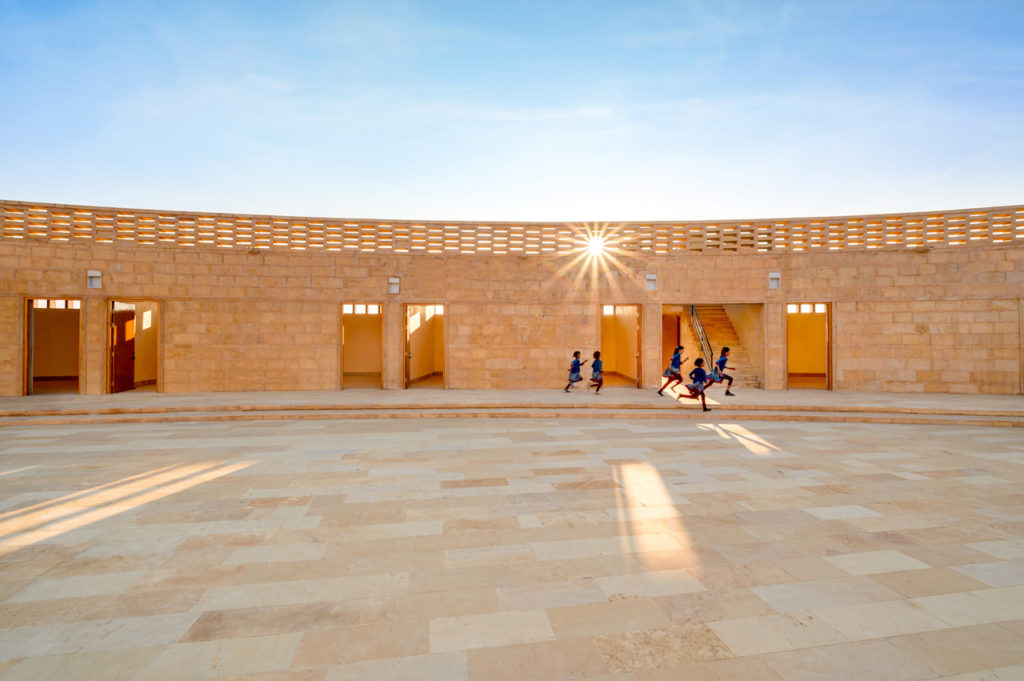
While the school has been welcomed as a meaningful initiative, the architecture has also drawn criticism by experts with some describing it as “out of context”. Indian academician, Vikram Berry, says: “It is irreverent to the great desert architectural traditions, narcissistic and exhibitionist. Such a big courtyard will be covered over by sand.”
Yet another expert, however, put it more objectively citing the idea of a reduction in urban sprawl and decentralisation. Responding to the skepticism on why it was located in the middle of nowhere making it unsafe and inaccessible, an urban planner further added that the location can be accessed by a bunch of nearby villages, therefore, providing a higher catchment area for more girls.
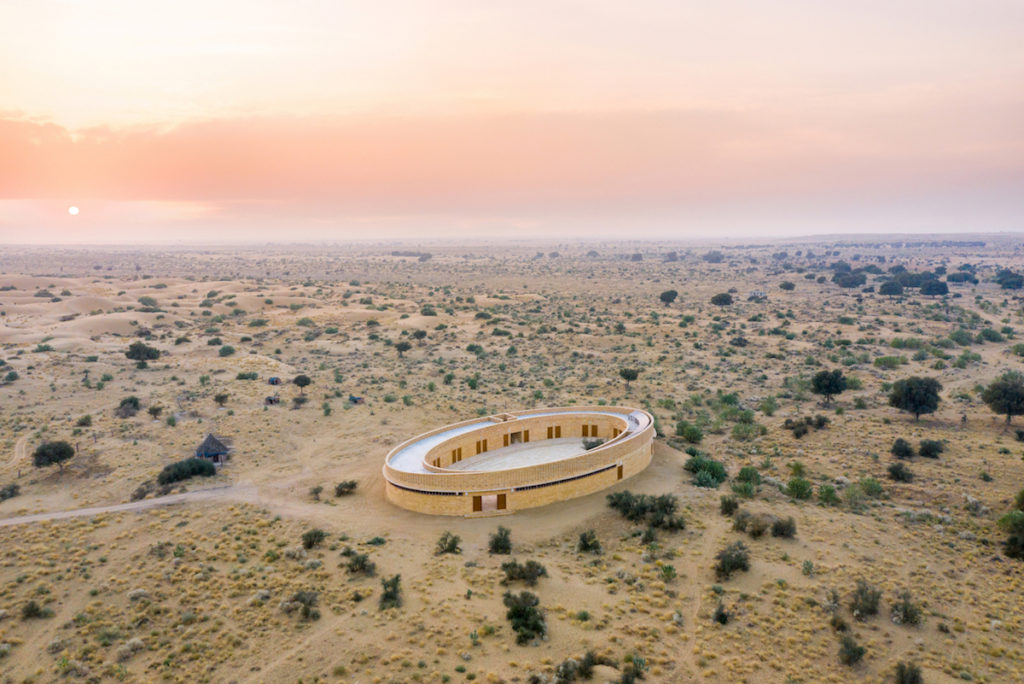
While the school stands as an isolated building now, it is expected to be a part of a larger complex that will in future also house other buildings such as a culture centre and a women’s co-operative and vocational training centre.
While the intent of the building is to counter urban sprawl and decentralise urban development, experts express skepticism that such a project merely acts as a band-aid that heals the symptoms, but not the “urban” illness.
Project details:
- Architects: Diana Kellogg Architects
- Year of completion: 2021
- Photographs: Vinay Panjwani
- Client: CITTA Foundation
- City: Salkha
- Country: India
See the full image gallery here:
You might also like:
Sanjay Puri Architects designs energy-efficient school in India to counter harsh desert climate
Samira Rathod-designed brick and terracotta school pays ode to children’s imaginative minds

